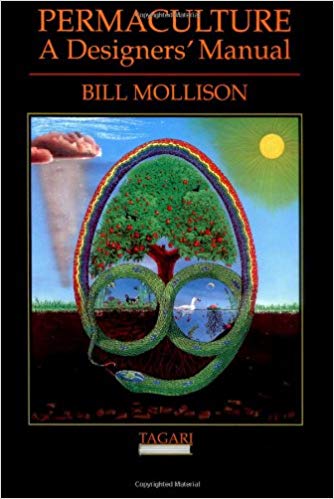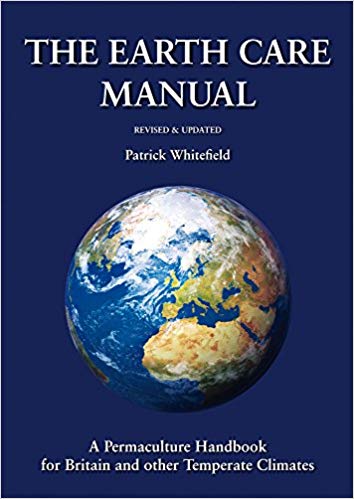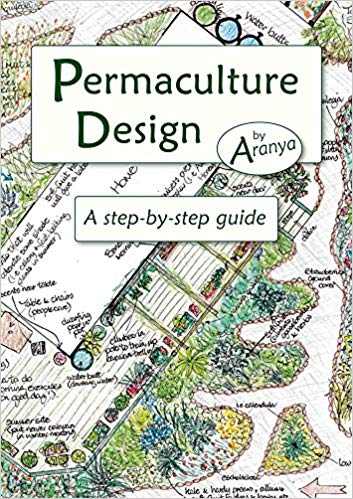
Appendix - Foraging Garden Design
Design Questionnaire
The following questions have been taken from The Earth Care Manual: A Permaculture Handbook for Britain and Other Temperate Climates. by Patrick Whitefield
Vision -
To be able to forage for a wide selection of berries and herbs both culinary and medicinal from an environment that provides habitat for wildlife and brings calmness to the mind.
Tenure - We have bought this house and we have no plans on moving.
Wants
What to get rid of - We are wanting to get rid of the lawn and shrubs.
Produce for home use - We would like to be able to pick a large selection of different leaves, flowers, etc. for salads throughout the year. We would also like to grow soft fruit such as raspberries, black currants, chuckleberries, strawberries, and rhubarb. Growing some medicinal plants would also be beneficial.
Other outputs
Beauty - The views are important for us both, we would like to be able to sit at the top of the garden and look down onto the castle. It would be also good to have an unobstructed view of the fields from the house. A stone circle would be nice.
Wildlife - Wildlife is most important to us, we want to encourage more wildlife into the garden. A small wildlife pond would be great. Lots of flowers are also a must, I enjoy insect photography so creating a food source and habitat for these is a requirement.
Education - With regards to the public footpath, it’s a great opportunity to share with people what we are creating in this small garden space.
Any other wants –
Seating areas - We love to spend time outdoors so having different places to sit and read would be nice. It would also be nice to have a little private space to eat and contemplate where we can escape from people walking past on the public footpath.
Order of priority - We would like to start with the garden on the left-hand side of the path with the intention of planting fruit bushes before spring. The right-hand side of the path can be started in spring.
Resources
Time - I’m very keen to get working on this design. It will mostly be evenings in summer, weekends and holidays from my full-time job for the rest of the year. Once the main part of the design is complete which will take me up until the summer of 2018, maintenance for the garden will be minimal.
Skills - I have worked for several years in the countryside so I have a background in outdoor work. I also have experience with other garden and allotment designs.
Money - There are very limited funds for the garden i.e. no budget due to the inside of the house coming first. A little money here and there will be fine, probably looking no more than £250 for the first year.
Equipment - The main requirement for equipment is a spade, string, and an A-frame.
Any other resources
Off-site - I’m in the very fortunate position of having an allotment which I’m in the process of giving up at the end of the season. I have been growing soft fruit and other plants that can be transplanted straight into the garden. I also have good spotting skills when out walking for discarded items.
General - What I particularly like about this site are the challenges that I’m straight away faced with due to the slope, it’s also a great opportunity to start with a blank canvas. I particularly value the view from the garden and the fact that I get to watch the sunset. The site is also going to add great value to how we live inside our house creating an outdoor living space in the warmer months followed by a space where we can watch the birds through the windows inside the house during the colder part of the year.
Client interview
The following client interview questions have been taken from the permaculture association knowledge base.
https://knowledgebase.permaculture.org.uk/design-methods/group-survey-client-interview
- Name(s) of client(s) (Maybe a person or a project.) - Stephen Andrews
- Address, email, phone, fax details. N/A
- Property size (square metres / acres / hectares.) - 63 square meters
- The number of people on the site. - Two
- Groups that use the site (e.g. user groups, staff, volunteers, schoolchildren.) N/A
- Physical challenges that need to be considered (blind, wheelchairs, etc.) N/A
- Occupations and skills - IT Support, skills – gardening, plant knowledge, general outdoor maintenance.
- Lifestyle/ethos of the group. - Healthy, Organic, sustainability, learning, creative, passionate.
- Eating habits - Organic, mostly vegetarian, seasonal, foraging, low carb, high good fat, homemade.
- Age ranges - Mid 40s
- Financial situation and budget for the project. - Working full time, very limited budget, £200 per year.
- On-site resources - Rainwater
- How the site is owned/rented (freehold, leasehold, rented from council, etc.) - House is owned.
- Any restrictions on how the land is used (detailed in lease agreements etc) No restrictions.
- Potential catastrophes, known problems and site difficulties (frost pocket, fire, flooding, persistent vandalism.) - None aware of
- Plans and drawings available. - Only self-drawn plans.
- Level of food production wanted. - Supplement diet for two people with fresh produce throughout the year.
- Existing energy efficiency measures, and energy usage. - none
- Privacy (views, neighbours, respecting other people’s privacy where the site is overlooking others) – It would be nice to have a place to sit out of sight from people on the public footpath.
- Priorities for the site - Food production, wildlife habitat, visually stimulating, relaxation.
- What do you most like about the site? - The views from the house are good, we look onto open fields, the top of the garden looks down onto the castle.
- What would you most like to change? - Remove the lawn
- Water catchment (quality and amount) - Rainwater from the house roof.
- Water general. - No outside tap, water would need to be brought through the house, tap water is not metered.
- Soils - Heavy clay soil.
- Erosion - none
- Aspect - South facing slope.
- Clients wants and needs (PASE sheet) N/A
- Names and addresses of supportive groups and people (councillors, voluntary service support, etc.) N/A
- Utilities (gas, electricity, mains water) – N/A.

Forest Garden Design
A forest garden as the name suggests is a garden that tries to emulate natural woodland ecosystems with the emphasis on producing food.
For our temperate climate here in the UK, forest gardens are commonly made up of seven plant layers. Additional layers may be found in tropical forests.
- Upper Canopy
- Lower Canopy or Sub-Canopy
- Vines and Climbers
- Shrubs, and understorey bushes
- Herbaceous perennials and annuals
- Ground Cover
- Roots and Rhizosphere
Consisting mainly of perennial plants that are productive or useful are stacked or assembled as they tend to be found in a woodland or forest. Once a forest garden is established it requires little or no extra energy input and minimal labor, whilst continuing to produce harvestable yields.
See also https://www.permaculture.org.uk/practical-solutions/forest-gardens

Chop and Drop
Chop and drop is a method of mulching that has become a core technique utilised by permaculture around the world. The method is to find a tree or plant that can be used as mulch; prune off branches, leaves or the entire plant, drop the chopped off material to the ground and leave it there.
Depending on the climate, over time the chopped off material will eventually breakdown and feed the soil, whilst also preventing undesirable plants from growing by suffocating them out. In our temperate climate branches will take much longer to breakdown than in tropical climates.

Closed-loop design
In this design “closed-loop” is where we are trying to recycle all nutrients and organic material back to the soil it grew in. For a small garden like this, we are never going to be able to close the loop, external resources will always need to be brought in to help improve the soil but working towards completing as much of the loop as possible using resources in and around the garden will help with the overall sustainability of the garden.

Soil microbiome
Soil represents one of the most highly diverse ecosystems on our planet with an interacting community of bacteria, archaea, viruses, fungi, and protozoa: collectively referred to as the 'soil microbiome'. The soil microbiome governs biogeochemical cycling of macronutrients, micronutrients and other elements vital for the growth of plants and animal life.

Permaculture Zones
Zone 0: Centre of activities - the house. This is high maintenance, high use and requires considerable investment of time and energy.
Zone 1: Annual plants, herbs, compost, plant propagation, construction and maintenance, bike store and other high use activities, greenhouse. Often irrigated
Zone 2: Dense planting, poultry and small livestock, orchard, polytunnels.
Zone 3: Large water storage, main crops, sheep, cows, field shelters.
Zone 4: Forestry, wood-pasture, dams, forage.
Zone 5: Wild zone, where nature is in charge and where we go to learn and harvest only that which is abundant.
Zone information https://www.permaculture.org.uk/design-methods/zoning

Habitat for Wildlife
A forest garden design along with chop and drop mulching will be beneficial in creating a habitat for wildlife. In a forest garden, we are trying to emulate a natural woodland ecosystem. With the chop and drop method of mulching, we are leaving the chopped plant material on the ground to slowly compost back into the soil. In the process, this material will become a habitat for wildlife whilst at the same time feeding the soil. As the forest garden matures the plant species will also be increased adding more and more perennial plants to the system. Growing perennials reduces the need to keep disturbing the soil. In this garden using five layers taken from the seven-layer forest garden model, “Roots and Rhizosphere”, “Ground Cover”, “Herbaceous perennials and annuals”, “Shrubs, and understorey bushes”, and “Vines and Climbers we are providing as much opportunity as possible for wildlife thrive in the garden.

A-frame level
An A-frame is a homemade piece of equipment used for measuring elevation. It can be made out of three sticks forming an A-shape, with a piece of string with a small weight hung from the apex. The weight needs to hang below the horizontal stick of the A-frame. With the A-frame resting on level ground, a mark is placed where the string passes the horizontal stick to indicate that the A-frame is level.
At this stage, the A-frame can now be walked across the land to mark out a line exactly on the contour.
- Place one foot of the A-frame at the point where the line is to start.
- Keeping that foot in place, move the other until the string matches up with the mark on the horizontal stick when both feet of the A-frame are firmly on the ground.
- If the string swings wildly back and forth, learn the A-frame back till the string rubs against the horizontal stick and the friction will slow it down.
- Stick a marker peg in the ground where the first foot is.
- Swing the A-frame round thought 108°, keeping the second foot in place on the ground.
- Repeat as before.
See page 405 The Earth Care Manual – Patrick Whitefield

Contour mound
Using the A-frame to mark the contour, a line of equal elevation across the garden. Along this line, a trench was dug that got backfilled with the lawn sod, on top of this got added a horizontal mound running long the contour using the soil dug out from the trench. The idea behind this is my own micro version of the macro landscape design of using swales and berms to pacify and hold water longer on a landscape. In this design adding a contour mound has been used to prevent heavy rains from washing over the garden and taking with them any nutrients that had been held in the topsoil. The contour mounds have also helped to add small terraces into the garden by being able to level the ground slightly on the top side of each mound. Once again pacifying any rainwater falling into the garden.
Once complete this will become part of a system helping to hold water and nutrients in the soil for longer.

Mulch of bark chippings
After the soil had been landscaped the quickest way to help prevent the soil from drying out in the sun was to add a layer of bark chippings. The bark chippings were added to the soil after it had been raining to help keep the soil moist. Over time these chippings will compost into the soil providing nutrients for the plants that will be then covering all of the soil.

Chamomile Lawn
Roman chamomile lawn There are two main types of chamomile, Roman chamomile, and German chamomile. German chamomile is an annual herb used for tea making, it has a wildflower look to it and grows upright. Roman chamomile is often used as a ground cover or as a creeping plant. The Elizabethans in England popularized the plant in the late fifteen hundreds where it was used as an alternative for grass in lawns. The benefits of using Roman chamomile as a lawn are that it needs limited maintenance with the occasional cutting back. It also produces a delightful scent that has been described as “rich”, “sweet”, “fruity” and “apple-like”. When walked over the scent is intensified providing a calming aroma in the garden. Growing aromatic plants helps to deter pests from the garden. The flowers of Roman chamomile provide an excellent food source for pollinators.

Stone circle
Little is know about the true purpose of the megalithic stone circles. In Great Britain, they date back to the late Neolithic and early Bronze Age eras, with most concentrations appearing from 3000 BC. However, with the erection of this stone circle, I’m able to share some more solid information. This circle consists of 9 standing stones gathered from within a two-mile radius of their current location. There are two stones together with a slight gap between them that marks the location of the winter solstice sunset. There is another stone that marks the winter solstice sunrise, with two more stones, one marking the summer solstice sunrise and the other marking the sunset. The remaining four stones are positioned throughout making the circle.
The position of the circle in the garden is on the highest point and when stud in it you have an amazing view of Richmond castle and town. The center of the circle is a Roman Chamomile lawn, with the outer edge full of wildflowers. The circle adds a magical space to the garden whilst at the same time telling a long-forgotten story about Britain.

Improve the soil

Add more plants
Keeping to soil covered is important for the health of the soil, using different layers of plants growing through a mulch on top of the soil we are trying to replicate the woodland floor. The only time you will find bare soil in woodland is when animals or birds have been active or a tree and been uprooted.

Watering
Watering the soil will need to be carried out the first year due to the soil having been landscaped resulting in the soil microbiome been disrupted. This causes the soil to quickly dry out, during periods with no rainwater, extra water will need to be added to prevent the plants from dying. This is why it is important to add lots of organic matter back into the soil for the first few years after any major soil movements. Once the soil is healthy again it will be able to hold water for longer reducing the need to add extra water. We are also going to be growing plants that are more resilient to longer periods of dryness also reducing the need for the soil to have extra water during dry periods.

Ponds – Monitoring the water levels
Both ponds each hold around 50 liters of water, during summer with birds and small animals drinking out of them along with evaporation water levels can soon drop. Topping up with water will often be needed. It’s also important to make sure the water from the fountain and pump are flowing back into the pond and not out into the garden.

Bocking 14 Comfrey
Comfrey is a member of the borage family. It’s native to Europe and Asia. Bocking 14 comfrey got its name from the village of Bocking, near Braintree, England. Here Laurence D Hills carried out trails on around 21 different strains of comfrey to find the most nutrient-rich, non-seeding strain. In the trial strain, number 14 was the most nutrient-rich, hence taking the name of the village we got Bocking 14.
As biomass comfrey produces large amounts of foliage from late spring until the hard frosts in late autumn, it can be cut up to 5 times a year and grows rapidly after each harvest. This one of the reasons I’m growing comfrey so I can use it as a mulch. The second is that comfrey had deep roots of up to 2 meters that utilize nutrients deep in the subsoil that would otherwise wash away with the underground soil water or remain inaccessible to other plants. This is why I've planted comfrey long the boundary fence on the low side of the garden. To try and capture these nutrients before they leave my garden. Once the roots have taken up these nutrients they are relocated through the plant with some ending up in the leaves. Here I will be able to cut back the comfrey leaves and apply them as a mulch around the garden where the mined nutrients are returned to the soil and made accessible to the shallower rooted crop plants.

Daffodils
The thought behind planting a row of daffodils along the fence line is to help to prevent the plants from my garden growing under the fence and into next doors garden. Daffodils, when grown in rows of several deep can act as a barrier stopping other plants from spreading through its densely packed bulbs. This should be helpful to hold back the comfrey which is another clumping plant that will expand each year from growing under the fence.

Websites
Websites offering useful intimation
Permaculture Association: https://www.permaculture.org.uk/
The Diploma in Applied Permaculture Design: https://www.permaculture.org.uk/diploma
To learn more about the Permaculture ethics and Principles https://permacultureprinciples.com/
Podcast - Homesteading and Permaculture by Paul Wheaton: https://richsoil.com/permaculture/category/podcast
Podcast - Diego Footer's Permaculture Voices: https://www.permaculturevoices.com/
Sun Surveyor app https://www.sunsurveyor.com/





















